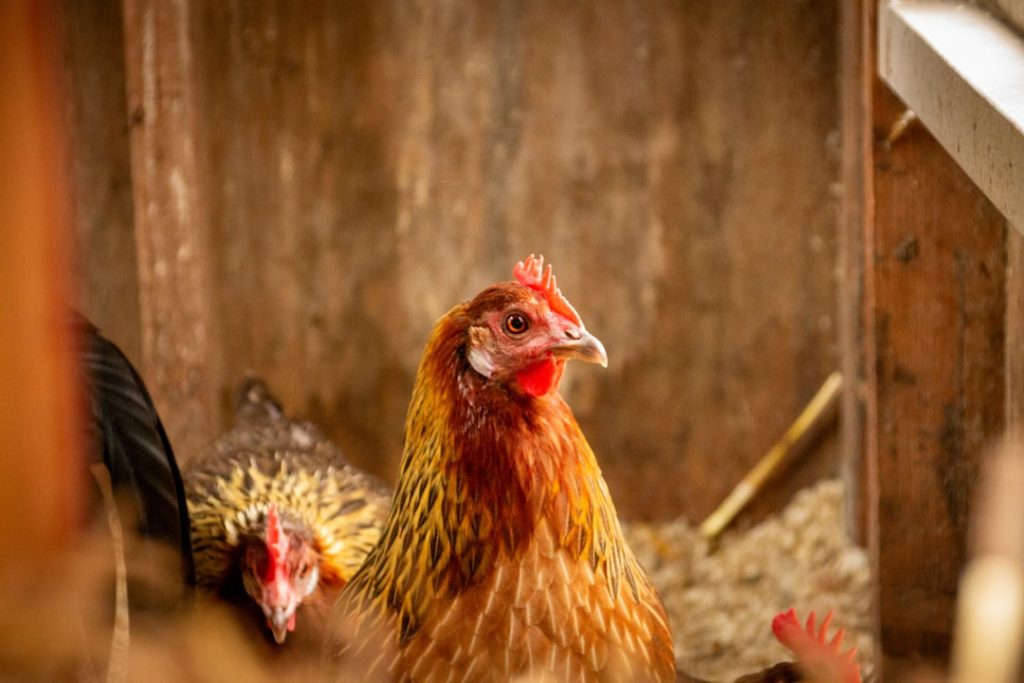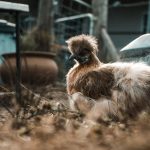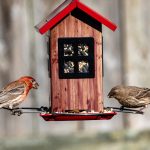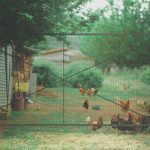When selecting fencing material for a chicken coop, several options are available. Chicken wire is a popular, cost-effective choice that is easy to install and provides a secure perimeter. It is essential to select high-quality, durable chicken wire that resists rust and corrosion.
Hardware cloth is a more robust alternative made from galvanized steel. It offers better protection against predators and weather conditions. Choosing hardware cloth with a small mesh size is crucial to prevent predator access.
Wooden fencing provides a natural, rustic appearance while maintaining security. Weather-resistant wood should be used to ensure longevity. Electric fencing can effectively deter predators by delivering a mild shock.
When installing electric fencing, it is important to adhere to safety guidelines and regulations to protect both chickens and potential predators.
Table of Contents
- 1 Designing the Fenced Area for Optimal Space and Safety
- 2 Providing Shelter and Shade within the Fenced Area
- 3 Implementing a Feeding and Watering System
- 4 Creating a Dust Bathing Area for Chickens
- 5 Monitoring and Maintaining the Fenced Area
- 6 Addressing Potential Predators and Pests
- 7 FAQs
- 7.1 What are the benefits of keeping chickens in a fenced area?
- 7.2 What type of fencing is best for keeping chickens in a fenced area?
- 7.3 How can I ensure that my chickens stay within the fenced area?
- 7.4 What are some additional measures I can take to keep my chickens safe in a fenced area?
- 7.5 Are there any legal considerations for keeping chickens in a fenced area?
Key Takeaways
- Consider factors such as durability, cost, and maintenance when choosing the right fencing material for your chicken coop.
- Design the fenced area to provide enough space for the chickens to move around freely and ensure that it is secure to keep predators out.
- Provide shelter and shade within the fenced area to protect the chickens from extreme weather conditions.
- Implement a feeding and watering system that is easily accessible for the chickens and easy to maintain for you.
- Create a dust bathing area for chickens to help them keep clean and healthy.
- Regularly monitor and maintain the fenced area to ensure it remains secure and in good condition.
- Address potential predators and pests by installing deterrents and regularly inspecting the area for signs of intrusion.
Designing the Fenced Area for Optimal Space and Safety
Space Requirements
A general rule of thumb is to provide at least 4 square feet of space per chicken in the fenced area. This ensures that your chickens have enough room to move around comfortably and engage in natural behaviors such as scratching and dust bathing.
Safety Considerations
In addition to providing ample space, it’s essential to design the fenced area with safety in mind. This includes ensuring that the fencing is secure and predator-proof, with no gaps or weak spots that could allow predators to gain access to your chickens. The height of the fencing is also crucial, as some predators such as foxes and raccoons are adept climbers. A good rule of thumb is to have fencing that is at least 6 feet high to prevent predators from gaining access to the fenced area.
Access to Essential Resources
Another important consideration when designing the fenced area is providing access to fresh water and shelter. It’s essential to place waterers and shelters strategically within the fenced area to ensure that your chickens have easy access to these essential resources. By carefully planning the layout of the fenced area, you can create a space that is both spacious and safe for your chickens to thrive.
Providing Shelter and Shade within the Fenced Area
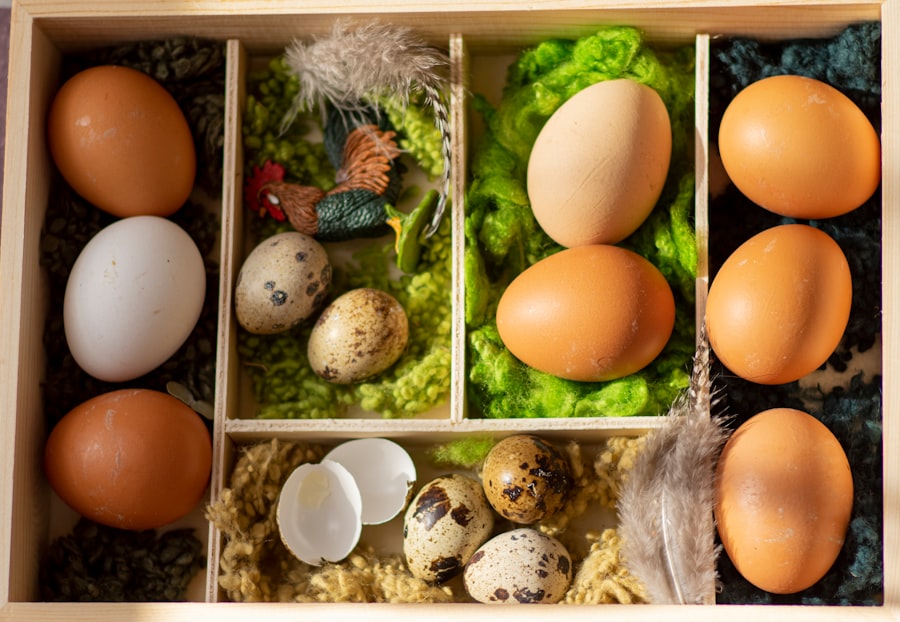
Shelter and shade are essential components of a well-designed fenced area for chickens. Providing shelter within the fenced area gives your chickens a safe place to roost, lay eggs, and seek refuge from predators or inclement weather. There are several options for providing shelter within the fenced area, including traditional chicken coops, portable chicken tractors, or even natural shelters such as trees or shrubs.
Chicken coops are a popular choice for providing shelter within the fenced area. Coops can be constructed in a variety of sizes and styles to accommodate different flock sizes and preferences. It is important to ensure that the coop is well-ventilated and provides enough space for your chickens to roost comfortably.
Additionally, the coop should be predator-proof, with secure doors and windows to keep potential threats at bay. Portable chicken tractors are another option for providing shelter within the fenced area. These lightweight, movable shelters allow you to rotate your chickens to fresh pasture while still providing them with protection from predators and the elements.
Chicken tractors can be easily moved around the fenced area, allowing your chickens access to fresh grass and insects while still keeping them safe and secure. In addition to providing shelter, it is important to ensure that your fenced area includes ample shade for your chickens. This can be achieved by planting trees or shrubs within the fenced area, or by providing shade structures such as awnings or tarps.
Providing shade within the fenced area helps to keep your chickens cool and comfortable during hot weather, reducing the risk of heat stress and ensuring their overall well-being.
Implementing a Feeding and Watering System
Implementing a feeding and watering system within the fenced area is essential for ensuring that your chickens have access to fresh food and water at all times. When designing your feeding system, it is important to consider the size of your flock and their dietary needs. Providing multiple feeding stations within the fenced area can help prevent competition for food and ensure that all of your chickens have access to nourishment.
There are several options for feeding systems, including traditional feeders, automatic feeders, or even DIY options such as PVC pipe feeders. Traditional feeders are a simple and cost-effective option for providing food within the fenced area. These feeders can be placed on stands or hung from the fencing to keep them off the ground and prevent contamination from dirt or droppings.
Automatic feeders are another option for providing food within the fenced area. These feeders dispense food at predetermined intervals, ensuring that your chickens always have access to fresh feed. Automatic feeders can be especially useful for those who are unable to check on their chickens multiple times throughout the day, or for those who have large flocks that require frequent feeding.
In addition to providing a feeding system, it is important to implement a watering system within the fenced area. Waterers should be placed strategically throughout the fenced area to ensure that your chickens have easy access to fresh water at all times. It is important to regularly clean and refill waterers to prevent contamination and ensure that your chickens stay hydrated.
Creating a Dust Bathing Area for Chickens
Creating a dust bathing area within the fenced area is essential for ensuring the health and well-being of your chickens. Dust bathing is a natural behavior for chickens, in which they roll around in dust or loose soil to help keep their feathers clean and free of parasites. Providing a designated dust bathing area within the fenced area encourages this natural behavior and helps keep your chickens healthy and comfortable.
To create a dust bathing area, simply designate a small patch of loose soil or sand within the fenced area where your chickens can dig and roll around. You can also add diatomaceous earth or wood ash to the dust bathing area, which can help control parasites such as mites and lice. It is important to regularly replenish the dust bathing area with fresh soil or sand to ensure that your chickens always have access to a clean and comfortable space for dust bathing.
In addition to providing a designated dust bathing area, it is important to ensure that your chickens have access to plenty of space for natural foraging behaviors. Allowing your chickens access to grassy areas or pasture within the fenced area encourages natural behaviors such as scratching and pecking, which can help keep them mentally stimulated and physically active.
Monitoring and Maintaining the Fenced Area
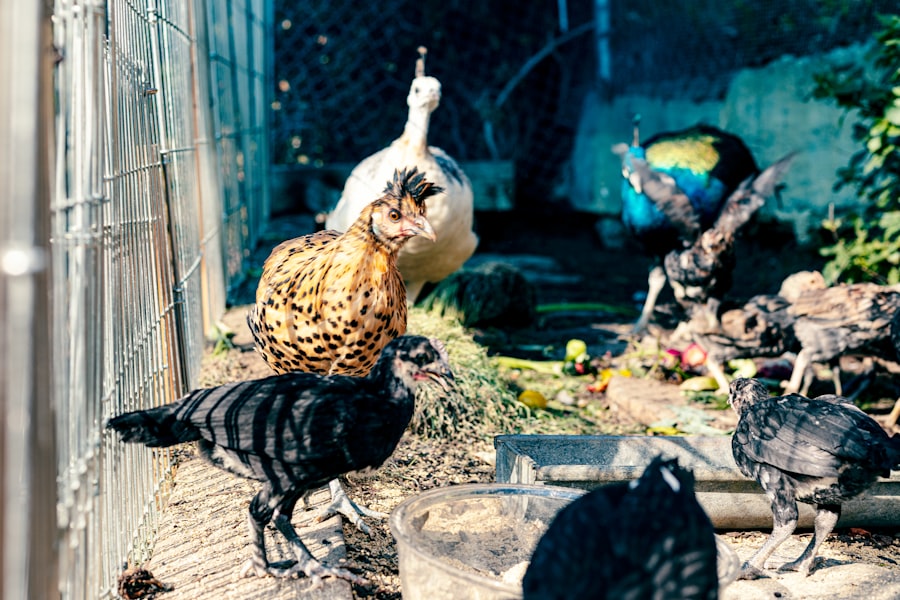
Fencing Inspections and Repairs
Regularly monitoring and maintaining the fenced area is crucial to ensure the safety and security of your chickens. This includes regular inspections of the fencing to identify any weak spots or damage that may need repair. Promptly addressing any issues with the fencing is essential to prevent potential predators from gaining access to your chickens.
Interior Maintenance and Cleaning
In addition to monitoring the fencing, it is essential to regularly clean and maintain the interior of the fenced area. This includes regularly removing droppings, refreshing bedding materials, and cleaning waterers and feeders. Regular maintenance helps prevent the buildup of bacteria and parasites within the fenced area, ensuring that your chickens remain healthy and comfortable.
Monitoring Chicken Health and Behavior
Regularly observing your flock is crucial to identify any signs of illness or distress, allowing you to address any health concerns promptly. By staying vigilant and proactive in monitoring and maintaining the fenced area, you can ensure that your chickens remain safe, healthy, and happy.
Addressing Potential Predators and Pests
Finally, it is important to address potential predators and pests that may pose a threat to your chickens within the fenced area. Common predators such as foxes, raccoons, hawks, and snakes can pose a danger to your flock if not properly managed. It is important to take proactive measures to deter these potential threats and protect your chickens.
One effective way to deter predators is by installing predator-proof fencing around the perimeter of the coop. This can include burying hardware cloth or chicken wire underground around the perimeter of the fenced area to prevent digging predators from gaining access. Additionally, adding an apron of fencing that extends outward from the base of the fence can help prevent predators from digging underneath.
In addition to predator-proof fencing, it is important to secure all openings in the coop such as doors, windows, and vents with sturdy hardware cloth or locks. Regularly inspecting these openings for any signs of damage or weakness can help prevent potential predators from gaining access. Another important consideration when addressing potential predators is implementing deterrents such as motion-activated lights or sound devices around the perimeter of the fenced area.
These deterrents can startle potential predators and discourage them from attempting to breach the coop. In addition to addressing potential predators, it is important to take proactive measures to control pests such as mites, lice, and rodents within the fenced area. Regularly cleaning and maintaining the interior of the coop can help prevent pest infestations, as well as using natural pest control methods such as diatomaceous earth or predator insects.
By taking proactive measures to address potential predators and pests within the fenced area, you can help ensure that your chickens remain safe and secure in their environment. Regular monitoring and maintenance of both the fencing and interior of the coop can help prevent potential threats from impacting your flock’s well-being. In conclusion, designing a well-planned and secure fenced area for your chickens is essential for ensuring their safety, health, and overall well-being.
By carefully choosing the right fencing material, designing an optimal space with shelter and shade, implementing feeding and watering systems, creating dust bathing areas, monitoring and maintaining the space, and addressing potential predators and pests, you can create a safe and comfortable environment for your flock to thrive. With careful planning and attention to detail, you can create a fenced area that provides everything your chickens need to live happy, healthy lives.
If you’re looking for more information on how to keep chickens in a fenced area, you might also be interested in learning about how to turn a shed into a chicken coop. This article from Poultry Wizard provides helpful tips and guidance on transforming a shed into a suitable living space for your feathered friends. Check it out here.
FAQs
What are the benefits of keeping chickens in a fenced area?
Keeping chickens in a fenced area provides them with a safe and secure environment, protects them from predators, and helps to prevent them from wandering into areas where they shouldn’t be.
What type of fencing is best for keeping chickens in a fenced area?
The best type of fencing for keeping chickens in a fenced area is typically a sturdy wire mesh or poultry netting that is at least 4-6 feet high to prevent them from flying over. It’s important to also bury the fencing underground to prevent predators from digging underneath.
How can I ensure that my chickens stay within the fenced area?
Regularly inspect the fencing for any damage or gaps that could allow chickens to escape. Additionally, providing them with plenty of space, food, and water within the fenced area will help to keep them content and less likely to try to escape.
What are some additional measures I can take to keep my chickens safe in a fenced area?
In addition to a secure fence, you can also consider adding a roof or cover to the fenced area to protect the chickens from aerial predators. Providing them with a secure coop within the fenced area for roosting and laying eggs is also important.
Are there any legal considerations for keeping chickens in a fenced area?
It’s important to check local regulations and zoning laws regarding keeping chickens in a fenced area, as some areas may have restrictions on the number of chickens allowed or the type of fencing required. Be sure to obtain any necessary permits or approvals before setting up a fenced area for chickens.
Meet Walter, the feathered-friend fanatic of Florida! Nestled in the sunshine state, Walter struts through life with his feathered companions, clucking his way to happiness. With a coop that’s fancier than a five-star hotel, he’s the Don Juan of the chicken world. When he’s not teaching his hens to do the cha-cha, you’ll find him in a heated debate with his prized rooster, Sir Clucks-a-Lot. Walter’s poultry passion is no yolk; he’s the sunny-side-up guy you never knew you needed in your flock of friends!

